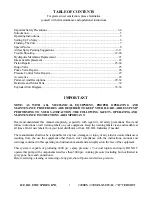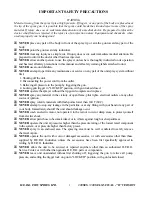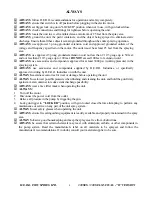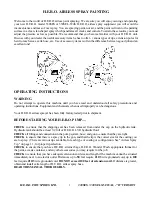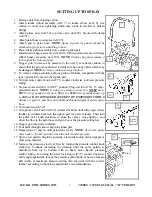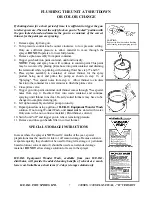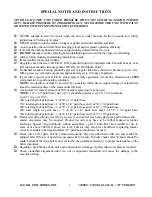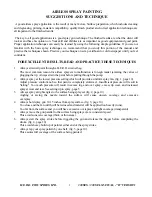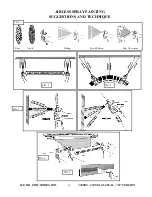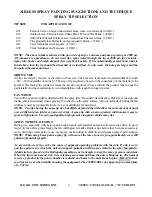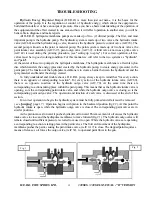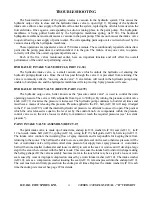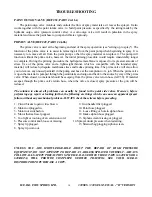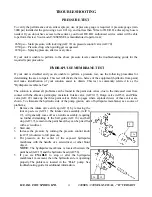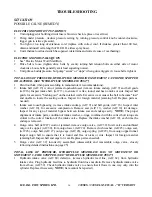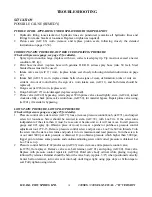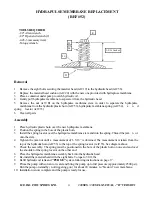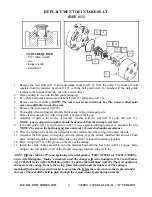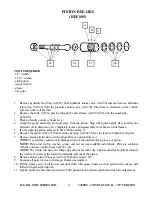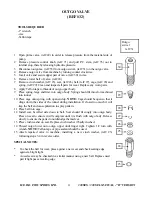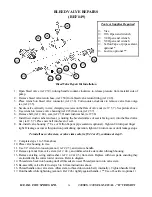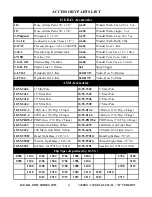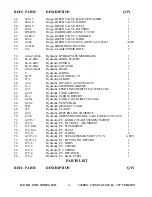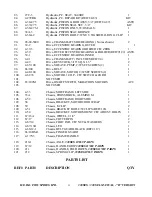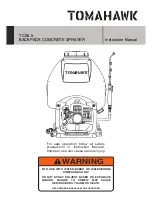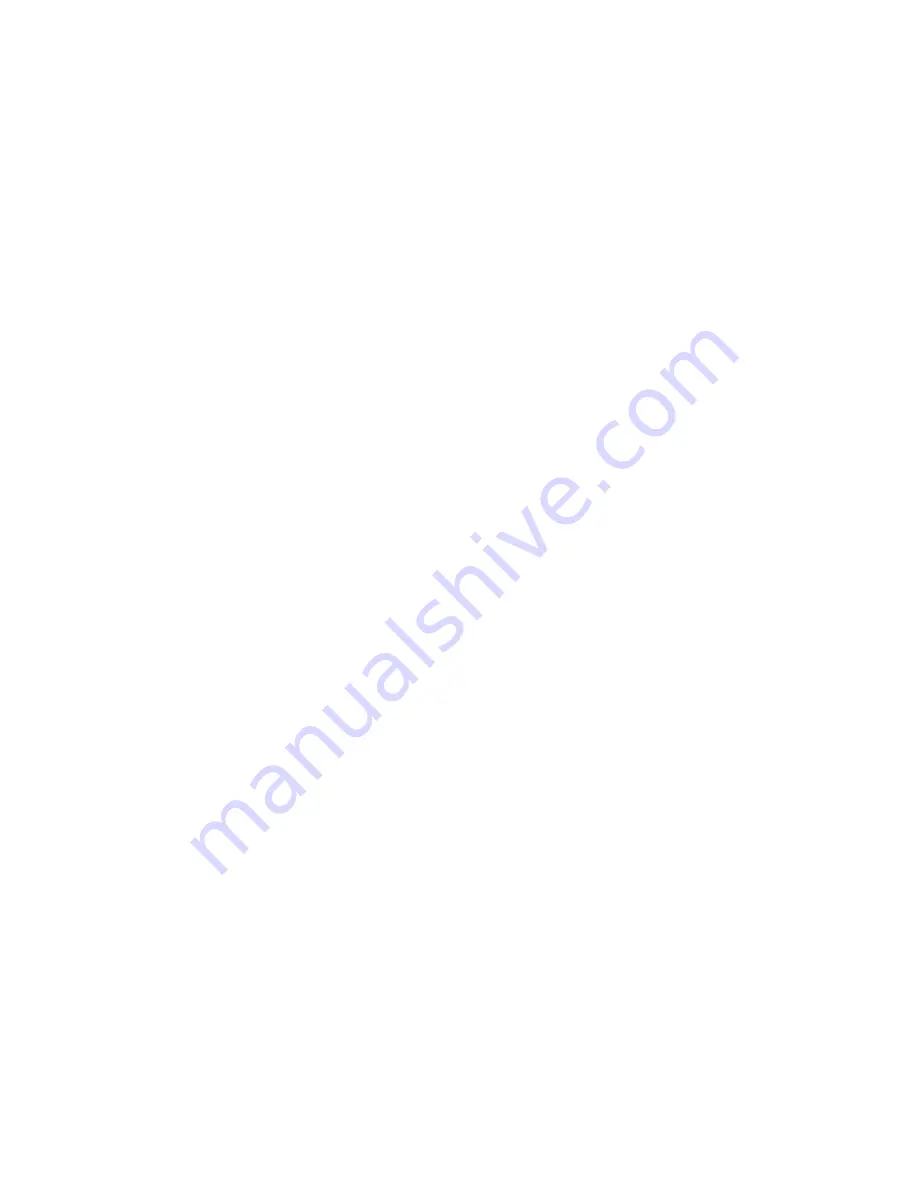
H.E.R.O. INDUSTRIES LTD.
330SES / 330SEL MANUAL - “B” VERSION
16
TROUBLESHOOTING
SITUATION
POSSIBLE CAUSE (REMEDY)
ELECTRIC MOTOR WON'T START/RUN
1. Unit unplugged or building circuit fuse is blown. (check, replace or reset fuse)
2. Pump under pressure. (reduce pressure setting by turning pressure control knob counter-clockwise,
trigger gun to relieve pressure).
3. Too light or too long of extension cord. (replace with correct cord. If distance greater than 100 feet,
obtain and install extra length of H.E.R.O. airless spray hose).
4. Unit's thermal overload switch has opened. (determine and correct cause of overheating).
ELECTRIC MOTOR STALLS/QUITS
1. See "Electric Motor Won't Start/Run
2. Drive belt is loose. (tighten drive belts by evenly turning belt tension bolts on either side of motor
clockwise. Loose belts generally emit loud squealing noises).
3. Unit primes, builds pressure, but pump “seizes” or “stops” when gun is triggered. ( loose belts, tighten).
TOTAL LOSS OF PRESSURE, HYDRAPULSE MEMBRANE MOVEMENT CANNOT BE STOPPED
OR ALTERED. (SEE "HYDRAPULSE MEMBRANE TEST")
1. Paint too thick. (thin paint according to manufacturer's recommendations).
2. Intake ball (ref# 13) worn or jammed opened/closed. (remove intake endcap (ref# 9) and ball guide
(ref# 16). Inspect intake ball, (ref# 13), to ensure it is free, round, and has no nicks or cuts. Inspect ball
guide for excessive "bashing out" on the internal walls. Excessive wear causes the ball to become "lost"
and unable to locate the seating surface. Inspect for foreign material jamming ball. Replace parts as
needed).
3. Intake seat loose/bypassing. (remove intake endcap, (ref# 9) and ball guide, (ref# 16). Inspect inlet
washer (ref# 10), for excessive compression. Remove seat (ref# 11), washer (ref# 10) for damage.
Inspect for any sign of material bypass between intake seat and endcap cavity.
NOTE;
The proper
alignment of intake parts, condition of intake washer, o-rings, combined with the correct bolt torque are
critical to the correct function of the intake valve. Replace the intake washer (ref# 10), each time the
endcap is removed.
4. Outgo valve ball (ref# 27) worn or jammed. (remove outgo valve, (ref# 32). Invert valve and unthread
outgo valve upper, (ref# 30), from outgo lower, (ref# 24). Remove crush washer, (ref# 25), outgo seat,
(ref# 26), outgo ball, (ref# 27), outgo cage, (ref# 28), outgo spring, (ref# 29), from outgo upper tunnel.
Inspect outgo ball to ensure that it is round and free of nicks or cuts. Inspect for foreign material
jamming ball. Inspect ball and cage for wear. Replace parts as needed).
5. Outgo valve (ref# 32) incorrectly assembled. (disassemble and reassemble outgo valve, closely
following detailed instructions on page 25).
TOTAL LOSS OF PRESSURE, HYDRAPULSE MEMBRANE HAS NO MOVEMENT OR
MOVEMENT CAN BE STOPPED. (SEE "HYDRAPULSE MEMBRANE TEST")
1. Hydraulic intake valve (ref# 60) defective. (remove hydraulic feed line, (ref# 62), from hydraulic
intake valve. Plug hydraulic feed line so hydraulic fluid does not drain. Remove hydraulic intake valve
from elbow, (ref# 59). Check hydraulic intake valve to ensure that it flows in one way only, into the
cylinder. Replace if necessary.
NOTE;
Item cannot be repaired ).

